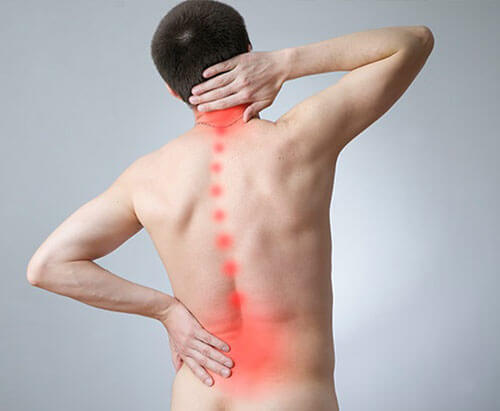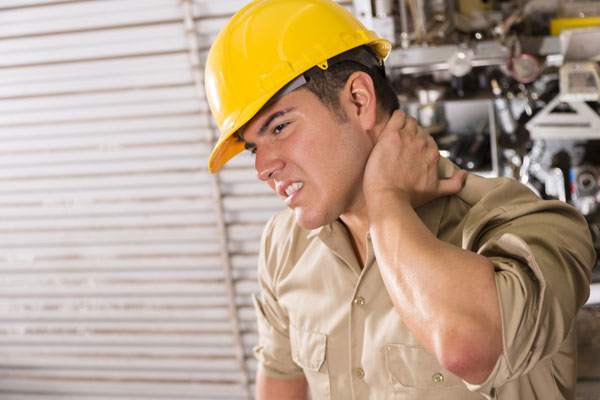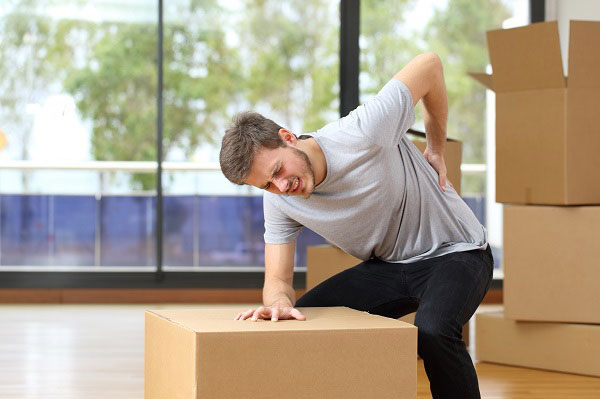What Are The Slip And Fall Out Of Court Settlement Amounts?
Wherever you are, whether at the store, at work, at school, or whichever place, slip, and fall accidents are prevalent. There are several reasons as to why this inevitable situation happens, with the majority of people blaming a slippery and wet floor. At other times, there might be an obstruction along the way which might trip your foot and make you fall. Regardless of the situation, these accidents can get you hurt or injured. No matter what caused it, the employer, owner of the building, or the business, will have to be liable for those injuries. You will stand to receive a slip and fall out of court settlement amount.
While there are several common injuries one might come across during a slip and fall accident, the compensation is awarded according to categories. These include the type of injury gotten, the medical bills incurred, and the attorney fees spent. In some other cases, the pain and suffering received due to the accident is also added.
For you to get the maximum payout for a slip and fall injury, your attorney needs to prove three key things;
What Kind Of Prove Needs Slip and Fall Settlement Attorney?
1. Liability or Duty of care
The defendant had a liability to protect you while on their property. A premise owner has several, different levels of care to the entrant. Their responsibilities also vary, depending on who you are. There are three different categories which are mostly looked at;
- An invitee
An invitee is an entrant who should be accorded the highest level of care while on a particular premise. This is someone who has been invited to go to that specific place by the premise owner or by a tenant there.
A customer at a store or a client at a business or company premises falls under this category. It is the legal Duty of the premises owner to build and maintain the place such that an invitee does not get hurt in whatsoever way.
- A licensee
A licensee is someone who, just as the name implies, is licensed to be on someone else’s property. In other words, they have permission from the premise owner or from a legal entity to be in those premises, even though it is not open to the public yet.
For instance, if a store is not yet opened for the public, someone else, such as an investigator or such like people, can still get in. Unlike in the case of an invitee, the premises must not be very safe for people.
However, the premise owner must notify the licensee of any impending dangers and if anything can cause an injury. After doing so, the licensee will, thereafter, proceed with caution.
- A trespasser
A trespasser is anyone who gets into the private property when they are legally not allowed to be there. If it is a public store, they would get in way past the time frame of which it is usually open to the public. A property owner has no duty of care to trespassers, apart from refraining from deliberate injury.
Just like in the case of an average settlement for slip and fall knee injury, there are high chances that your case will come out victorious if you were an invitee. Under the right circumstances, an employee or a shopper at a store will pass out as an invitee. This is as long as they stick to their designated spots.
In many cases, every store is required by law to indicate the boundaries for the designated spots where employees and shoppers can access. If a shopper accesses a room indicated ‘staff only,’ then they should not expect any sort of compensation made.
Social guests and some family members are recognized as no better than licensees.
2. Negligence
For you to prove negligence, you will have to demonstrate how the defendant failed to act to prevent the injury from happening. One of the questions which might be raised is whether or not the hazard was there long enough for the victim to see.
For instance, if someone threw a banana peel on the floor, for how long was it there? If at all the banana peel was there for a long time, probably for a couple of minutes, the judge or the jury might rule that the defendant had enough time to see it and should have taken the necessary measures to ensure that the floor is safe.
However, if the victim slipped and fell, just almost immediately the banana peel was thrown, their lawyers might argue that the defendant did not have enough time to see the hazard hence could not remove it in time before the accident happened.
The defendant might also be asked to provide a log which indicates that they conducted routine checks to ensure that any hazards were taken care of. An investigation might also have to be carried out to determine whether poor lighting conditions were also the causes of the accident.
3. Responsibility/Fault
One of the most challenging cases to prove is whether the victim was completely free from fault when the accident happened. While there might be some reasons which would have led to the slip and fall accident, the plaintiff must place all the blame on the defendant and should also be free from guilt.
If the plaintiff had a part to play leading to their own injury, then they must accept their portion of the liability. Doing so usually negates the assumption that the premise owner will have to cover the full responsibility of the accident.
There are some states which recognize contributory fault laws. An award of the settlement will not be made to the plaintiff if at all there is some partial blame, even the slightest of it, to the injured party. These states will order the awarding of the settlement only in proportion to the percentage of the liability. Partial liability is also determined by the engagement, access, and whether or not the plaintiff was given any warnings.
Some of the other issues which might affect the said partial liability settlement are, among others;
- Was the plaintiff distracted or using their mobile phones when the accident happened?
- Were warning signs provided and the plaintiff completely disregarded them?
- Were the hazard signs conspicuous enough to be seen easily?
- Was the plaintiff in an area they were granted access to?
Common Injuries Associated With Slip and Fall Accidents
Ranging from minor bumps to bruises, all the way to permanent disabilities, slip and fall accidents can have detrimental impacts. While there are several injuries that can occur, here are a few more common injuries;
Back and Neck Injuries
Back and neck injuries can occur, and in some cases, they carry harsh results. One can end up with broken and (or) slipped disks along the lower neck and the spinal column. There might be an accompanying pain, which might turn out chronic. A back and neck injury might debilitate a person, changing their lives completely.
Head Injuries
Concussions can happen to the head after a slip and fall injury. Traumatic injuries to the brain can be caused, bringing forth issues to do with mobility, balance, memory loss, or even cause other cognitive and behavioral problems.
Pelvic Injuries
In the majority of reported slip and fall accidents, the victims are mostly the elderly. Many of these accidents result in fractured pelvises or broken hips. Such types of injuries are excruciating and might require highly invasive injuries to treat, and for the elderly, this could mean extended nursing homestays.
Torn Tendons and Ligaments
It is natural for someone to try and hold something, literally anything which can help them prevent the fall. At times this works by blocking the fall altogether, but should that not succeed, it might result in even more severe injuries. One can easily tear down a tendon. Such injuries can be treated with surgery and physical therapy. However, there can be life-long injuries the victim might receive, which may remain permanent.
Factors To Be Considered For a Slip and Fall Injury Settlement
If you can build up a strong case with sufficient proof, there are high chances that your case will come out victorious. The amount of money payable by the defense attorneys or the insurance company varies, just as in the case of average settlement for slip and fall knee injury. Here are a few common factors that affect the slip and fall out of court settlement amounts;
1. Total Medical Expense Value
When using the slip and fall settlement calculator, the first thing which will be factored in is the amount of money spent on your medical bills. All past, current, and future medical bills relating to your injury will be taken into consideration. The money your insurer paid will also be factored in, in addition to what you paid out of pocket.
If there will be future medical costs such as the need for therapy, future surgeries, or medications, your attorney will have them all keyed in. The duration and the frequency of those services will also have to be factored in.
2. Pain and Suffering
Calculating pain and suffering might not be as easy as getting the total medical cost is. In many cases, this depends on the severity and permanency of the injuries received from the accident. The type of damage received will be crosschecked with the medical costs accrued, then a multiplier is used to get the amount you are to receive for pain and suffering.
Injuries that you can recover from quickly will have a lower pain and suffering value compared to those with long-term impacts. For instance, if you slipped and fell, and you can no longer walk well, a higher multiplier will be used to get your settlement value.
Conversely, if you fell and only sprained your ankle, a lower multiplier will be used.
3. Lost Wage Value
When you miss work due to the injuries you received, you will have to be compensated for the amount of money you would have made. You will, therefore, be forced to produce proof of work and your pay stub. Furthermore, you must have a good reason for why you are not attending work.
If at all the doctors cleared you to go back to work and you still spend your time at home, the defense attorneys will argue that you should not get paid.
4. Loss of Earning Capacity Value
Some injuries from a slip and fall accident might leave you permanently disabled, and you may not be in a position to go back to work as you did before the injury. Whether you cannot work at all or you must take on a lesser-paying job, you will be entitled to a much bigger compensation. It is the same case when you are forced to work part-time all because of your injuries. This should stand for the loss of earning capacity potential.
You will be given a lump sum of money if you can correctly calculate the money you would have made until retirement. Alternatively, you will be trained on how to work elsewhere, in a position that might not be affected by your injuries.
5. Your Contribution to the Incident
If you push for a case seeking compensation after a slip and fall accident, do not be surprised to see that the defense or the insurer tries to push some blame on you. While some situations might have made you slip and fall, you must still be in a position to prove that you are free from guilt. If you are not free from guilt, then this will be taken into account by the judge or the jury when deciding on your payout settlement.
6. Legal Representation Matters
The legal representation you get is very crucial in determining the amount of compensation you receive. A highly competent slip and fall injury attorney will ensure that you get what you deserve as a settlement. Furthermore, their legal services will also be taken into account when calculating the amount of compensation you receive in the long run.
Finally
A slip and fall lawsuit will not be the most straightforward case you will file. You will need a very competent lawyer and enough evidence to accentuate your claims. Furthermore, your health matters the most, first seek medical attention before starting with any legal processes. Consequently, utilize our post, which can get you well prepared for you to get the maximum payout for a slip and fall injury.





